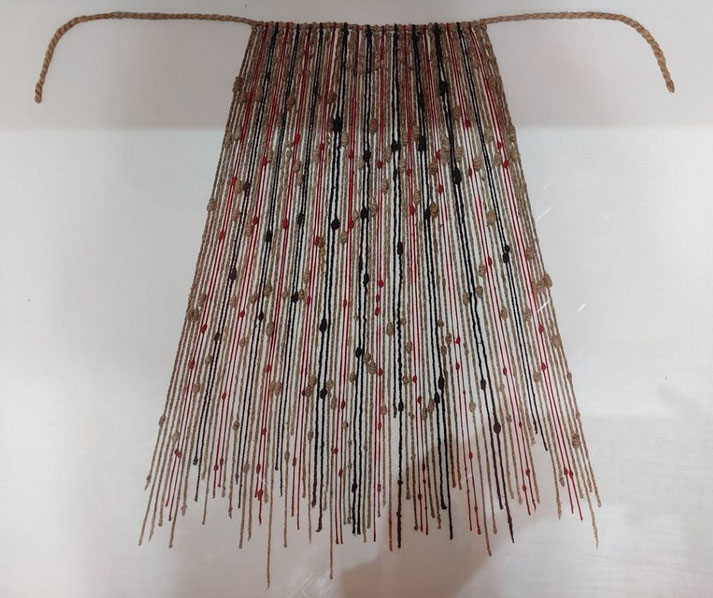Quipu: The secrets of the ancient Incan communication system

In the rugged and breathtaking Andean mountains, a unique and enigmatic form of communication once thrived, tying together the threads of ancient civilizations: the quipu.
Consisting of intricately knotted cords in an array of colors, lengths, and materials, quipu served as a versatile and sophisticated means of record keeping and information exchange.
But how did this intricate system of knots develop?
What secrets lie within its complex structure?
And how have scholars attempted to unravel the mysteries of this lost language of the Andes?
What are 'quipu'?
Quipu, or khipu (meaning "knot" in the Cusco Quechua language), is an ancient Andean system of communication and record keeping that dates back to the pre-Inca era.
Despite having no written language, the civilizations of the Andean region developed this unique method to store and transmit information.
Comprising intricately knotted cords of different colors, lengths, and thicknesses, quipus served as a versatile and sophisticated tool for managing a variety of data, including accounting, census records, and historical events.

Origin and use
Quipus are thought to have originated from the Caral civilization, which thrived between 2600 and 2000 BCE on the central coast of present-day Peru.
They were later adopted and developed by the Wari, Tiwanaku, and Chimu cultures before reaching their zenith in the Inca Empire (13th-16th century CE).
Inca administrators, known as quipucamayocs or khipu-keepers, were responsible for creating and maintaining these knotted records.
The quipus' primary function was to store numerical data, typically relating to the empire's extensive resource management system.
The Incas meticulously recorded information about agricultural production, population census, tributes, and military logistics.
However, some researchers argue that quipu may have also served as a narrative medium to preserve historical events and communicate messages.
How are they made?
A quipu consists of a main cord, called the primary cord, from which several pendant cords of varying lengths, colors, and materials hang.
Some pendant cords have additional subsidiary cords branching off, creating a complex hierarchical structure.
The knots are the fundamental components of the quipu and come in three main types: the figure-eight knot, the long knot, and the single knot.
Each knot type represents a different numeral, while the position of the knot on the cord indicates its place value.
Colors and materials also played a significant role in the quipu system. The Incas used a wide range of naturally occurring colors for their cords, including white, green, red, yellow, and blue.
Some cords were even made from animal fibers like alpaca, llama, or cotton.
Researchers believe that the different colors and materials may have been used to convey additional information or categorize the data recorded.

Deciphering the Quipu code
Although quipus have been known to archaeologists for centuries, their exact meaning and purpose have long remained elusive.
The destruction of many quipus by Spanish conquistadors and the lack of a written language for context have hindered the deciphering process.
However, recent advances in the field have allowed researchers to make some headway in understanding the quipu code.
By analyzing surviving quipus and comparing them to colonial-era records, researchers have begun to unlock the numerical system that underpins quipus.
While there is still much work to be done, these findings have provided valuable insights into the Andean cultures that relied on quipus for their administration and communication needs.
Forever a mystery?
Quipu, the ancient Andean system of communication and record keeping, stands as a testament to the ingenuity and resourcefulness of pre-Columbian civilizations in the absence of a written language.
Although many mysteries still surround this enigmatic tool, quipu continues to captivate the imagination of scholars and enthusiasts alike.
As research progresses, our understanding of quipu will undoubtedly deepen, shedding light on the remarkable societies that created and utilized this fascinating system of knotted cords.
What do you need help with?
Download ready-to-use digital learning resources
Copyright © History Skills 2014-2024.
Contact via email
With the exception of links to external sites, some historical sources and extracts from specific publications, all content on this website is copyrighted by History Skills. This content may not be copied, republished or redistributed without written permission from the website creator. Please use the Contact page to obtain relevant permission.





